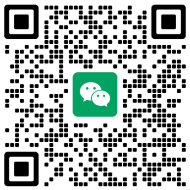

Global high-mix volume high-speed PCBA manufacturer
9:00 -18:00, Mon. - Fri. (GMT+8)
9:00 -12:00, Sat. (GMT+8)
(Except Chinese public holidays)


Global high-mix volume high-speed PCBA manufacturer
9:00 -18:00, Mon. - Fri. (GMT+8)
9:00 -12:00, Sat. (GMT+8)
(Except Chinese public holidays)
HomePage > Blog > Knowledge Base > How to Read the 1.2K Resistor Color Code?
Resistor color code comprehension is a basic component of electronics expertise. Experience with PCBs doesn’t reduce the necessity of identifying values on the spot during assembly or repair. You can easily find out the specs of a resistor by just looking at its color bands without the need for a multimeter.
1.2K resistors are a common occurrence in analog and digital circuit design. Whether you’re setting filters, bias points, or current, the 1.2K value is often required. Only if you can recognize the color code in an instant can you read the value of a resistor correctly and effectively. You’ll be able to determine the values correctly with confidence at a glance.
Read on as we tell you more about 1.2K resistors, their uses and how to identify them easily. You’ll learn precisely what each color band means, how to read the sequence accurately, and how to avoid typical mistakes.

The resistor color code gives an easy way of stating the value of a resistor. Instead of printing numbers directly on the resistor, manufacturers use colored bands. The bands indicate the resistance value, the tolerance and sometimes the reliability as well.
Each color indicates a number. Going through the bands from left to right, you can establish the full value. This approach works due to the small size of resistors. Resistors are too small to display whole numbers on them. Color codes enable you to read a resistor’s value easily, even when the board is packed.
Resistors are most commonly marked with four, five or six bands of color. The four-band color code is a popular choice for through-hole resistors. It gives you both resistance and tolerance. It only takes a few seconds to determine the value of a resistor once you get a bit of practice.
The 1.2K resistor is common in a variety of printed circuit applications. It successfully limits current, generates precise voltage dividers, and performs pull-up or pull-down roles. You’ll find them often in analog and digital circuits.
In audio equipment, 1.2K resistors are important in the toning and volume control. In addition, they help protect the part by controlling currents properly. If you're designing an op-amp or filter, 1.2K resistors are often the right solution.
1.2K resistors are also able to be used for reference voltage or transistor biasing. They find a good compromise with regards to the amount of current that flows through them and their resistance. That is why, 1.2K resistors are widely trusted in many electronic projects.
 About PCBasic
About PCBasic
Time is money in your projects – and PCBasic gets it. PCBasic is a PCB assembly company that delivers fast, flawless results every time. Our comprehensive PCB assembly services include expert engineering support at every step, ensuring top quality in every board. As a leading PCB assembly manufacturer, we provide a one-stop solution that streamlines your supply chain. Partner with our advanced PCB prototype factory for quick turnarounds and superior results you can trust.
A 1.2K ohm resistor has a resistance of 1,200 ohms. In the four-band system, the first two bands are digits and the third band is a multiplier.
The colors of the bands for a 1.2K resistor are:
• Brown = 1 (first digit)
• Red = 2 (second digit)
• Red = 100 (multiplier)
• Gold = ±5% (tolerance)
A brown-red-red-gold resistor color coding, therefore, represents a 1.2K ohm value and a 5% tolerance. That is to say, the true value of resistance can be between 1,140 and 1,260 ohms.
The order of the colors is set, and you need to read them from the left edge of the resistor. For ease of identification, resistors normally have the tolerance band separated from others.
A resistor color code is like a numerical code that you can read fast. Pay attention to the band that is nearer to the edge of the resistor. That’s the first digit.
Follow these steps to learn how to read resistor color code:
1. Find the first color band: This decides what the first number of the value of the resistor will be. For 1.2K, it's brown (1).
2. Find the second band: This adds the second digit. In this case, it's red (2).
3. Look at the third band: This is the multiplier factor of the number, which should be multiplied by zeros. Red again means ×100.
4. Check the fourth band: This shows the tolerance. Gold means ±5%.
Now put it all together:
1 (brown) → 2 (red) → ×100 (red) = 1,200 ohms (1.2K).
Tolerance = ±5% (gold)
If you’re not sure, check a resistor color code chart for confirmation. In no time, you will be able to associate these values with a glance.

For you to better understand 1.2K ohm resistors, this resistor color code chart helps you interpret resistor values.
|
Color |
Digit |
Multiplier |
Tolerance |
|
Black |
0 |
×1 |
— |
|
Brown |
1 |
×10 |
±1% |
|
Red |
2 |
×100 |
±2% |
|
Orange |
3 |
×1,000 |
— |
|
Yellow |
4 |
×10,000 |
— |
|
Green |
5 |
×100,000 |
±0.5% |
|
Blue |
6 |
×1,000,000 |
±0.25% |
|
Violet |
7 |
×10M |
±0.1% |
|
Gray |
8 |
×100M |
±0.05% |
|
White |
9 |
×1B |
— |
|
Gold |
— |
×0.1 |
±5% |
|
Silver |
— |
×0.01 |
±10% |
|
None |
- |
- |
± 20% |
Assure yourself that you always interpret the color bands in the left to right order. The first two bands are the starting number. The third adds the multiplier. The fourth band specifies the tolerance.
For example:
• Brown, Red, Red, Gold = 1.2K ±5%
• Red, Violet, Brown, Gold = 270 ohms ± 5%.
• Orange, Orange, Orange, Gold = 33 kiloohms ±5%
Once you get familiar with color codes, you’ll hardly consult the chart. What matters is to keep on perfecting your skills on the color code resistor.
1.2K resistors are commonly used in circuit design, which makes it necessary for anyone wiring up PCBs to be able to quickly read their value. The color bands will allow you to see the resistance easily without you having to depend on additional tools.
By identifying resistor values through the color bands, common errors when constructing or repairing equipment can be avoided. Checking your parts quickly at your workbench is also useful. Brown-red-red-gold? That’s 1.2K. Simple, quick, and clear.
Regularly acquainting yourself with the colors of resistors improves your efficiency in electronic work. This simple skill can make you much more efficient throughout each day.

Assembly Enquiry
Instant Quote
Phone contact

+86-755-27218592
In addition, we've prepared a Help Center. We recommend checking it before reaching out, as your question and its answer may already be clearly explained there.
Wechat Support

In addition, we've prepared a Help Center. We recommend checking it before reaching out, as your question and its answer may already be clearly explained there.
WhatsApp Support

In addition, we've prepared a Help Center. We recommend checking it before reaching out, as your question and its answer may already be clearly explained there.
